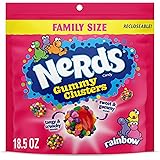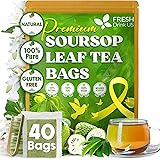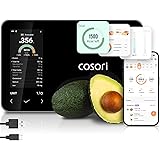Embarking on a plant-based journey or simply looking to incorporate more vegan meals into your routine can feel daunting at first. However, mastering a few core, uncomplicated dishes is often considered a crucial first step. The video above showcases three such essential easy vegan recipes for beginners, providing a solid foundation for delicious, plant-powered eating.
For those new to the vegan lifestyle, these fundamental recipes offer both comfort and versatility. They are designed to be easily replicated, ensuring that healthy, ethical eating remains accessible and enjoyable. By focusing on simple preparation and readily available ingredients, a smooth transition into vegan cooking is greatly facilitated. These recipes demonstrate how familiar flavors can be recreated using plant-based components, making the journey less about deprivation and more about discovery.
1. The Art of Easy Vegan Recipes: Building Your Plant-Based Culinary Toolkit
Transitioning to a vegan diet does not mean sacrificing flavor or comfort. Instead, it involves discovering innovative ways to prepare dishes that are both nourishing and satisfying. These beginner-friendly recipes are selected for their straightforward approach and adaptable nature. They serve as excellent starting points, allowing for confidence to be built in the kitchen.
A plant-based diet, when well-planned, can offer numerous health benefits, alongside its positive environmental impact. The development of basic cooking skills with accessible ingredients is, therefore, an investment in both personal well-being and sustainable living. These three easy vegan recipes for beginners are strategically chosen to highlight versatility and flavor, making them staples for any aspiring vegan cook. The process of learning these dishes can be likened to acquiring fundamental tools for a new craft, each recipe adding to a growing repertoire of culinary expertise.
Mastering Staples: Why These Recipes Are Essential for Beginner Vegans
The selection of these specific recipes is not arbitrary; each one addresses common culinary challenges faced by those new to veganism. Often, new vegans miss the textures and flavors of certain classic dishes, such as creamy salads, savory appetizers, or rich sauces. These recipes provide plant-based answers to those cravings, proving that vegan food can be just as satisfying as its conventional counterparts.
Furthermore, the simplicity of preparation means that less time is spent in the kitchen, a significant advantage for busy individuals. Ingredients are often shelf-stable or easily found in most grocery stores, reducing the need for specialty shopping trips. This ease of access and preparation encourages consistent plant-based eating, making it a sustainable practice rather than a fleeting experiment.
2. Chickpea “Tuna” Salad: A Plant-Based Classic Reimagined
The beloved mayo-based salad sandwich, a staple in many lunchboxes, is expertly recreated in its vegan form using chickpeas. This dish, often referred to as chickpea “tuna” salad, harnesses the texture and mild flavor of chickpeas to mimic traditional tuna salad. It stands as a testament to how familiar comfort foods can be successfully adapted for a plant-based diet.
The key to this recipe’s success lies in its textural approximation, achieved through the gentle mashing of chickpeas. This process creates a flaky, yet substantial base, which is then combined with crisp vegetables and a creamy dressing. The versatility of chickpeas makes them an ideal canvas for various flavor profiles, allowing for personalization based on individual preferences. This easy vegan recipe for beginners quickly becomes a go-to for quick lunches or light dinners.
Crafting the Perfect Chickpea Base and Flavor Profile
The foundation of this vegan “tuna” salad is, of course, the chickpea. Canned chickpeas are typically used, with the liquid, known as aquafaba, often reserved for other culinary applications. Aquafaba, a remarkable byproduct, can be transformed into meringues, mousses, or even homemade vegan mayonnaise, showcasing the resourcefulness inherent in vegan cooking.
Once drained and rinsed, the chickpeas are lightly mashed, creating a texture reminiscent of flaked fish. To this, finely diced celery is added, providing a refreshing crunch, alongside thinly sliced scallions for a subtle oniony bite. It is often recommended that raw onion be finely minced or even rinsed in cool water to mitigate its sharpness, ensuring a balanced flavor in every bite. This attention to detail elevates a simple mash into a sophisticated salad.
The dressing typically comprises a generous amount of vegan mayonnaise, with options for a lighter version by reducing the quantity or substituting with unsweetened vegan yogurt or mashed avocado. The tanginess is enhanced by Dijon mustard and a squeeze of fresh lemon juice, which brightens all the flavors. For those desiring a “fishy” note, small amounts of finely crumbled nori seaweed or a dash of furikake can be incorporated, delivering a subtle taste of the ocean without any animal products. Seasoning with salt and freshly cracked black pepper is essential to bring out the full depth of flavor, making this an undeniably delicious and easy vegan recipe for beginners.
3. Addictive Plant-Based Bites: Crispy Cauliflower Buffalo Wings
For those craving the spicy, savory kick of buffalo wings, cauliflower presents an unexpected yet highly effective plant-based alternative. These crispy cauliflower buffalo wings have gained immense popularity, captivating palates with their tender interior and delightfully crunchy exterior. This dish is celebrated for its ability to mimic the experience of traditional wings, making it a crowd-pleaser for vegans and non-vegans alike.
The transformation of a humble vegetable into a craveable appetizer is a testament to the creativity possible within vegan cuisine. Cauliflower florets, when properly prepared, absorb flavors beautifully and achieve a satisfying texture. This makes them an ideal candidate for coating in a seasoned batter and tossing in a vibrant buffalo sauce. These wings are not only simple to prepare but also provide a healthier alternative to their meat-based counterparts, making them an excellent addition to any collection of easy vegan recipes for beginners.
Crafting Crispy Perfection: Batter, Bake, and Sauce
The journey to perfect cauliflower wings begins with preparing the cauliflower itself. A medium to large head is typically sectioned into florets, aiming for a size that allows for even cooking and optimal batter adhesion. These florets are then coated in a simple, spiced batter, usually consisting of all-purpose flour (though gluten-free blends or chickpea flour can be used), garlic powder, onion powder, paprika, and salt and pepper. Nutritional yeast is also a popular addition, imparting a savory, cheesy depth to the batter.
Unsweetened plant milk or even water is gradually whisked into the dry ingredients until a consistency slightly thinner than pancake batter is achieved. This ensures that the cauliflower florets are evenly coated without being too thick or clumpy. Once coated, the florets are arranged on a parchment-lined or greased baking sheet, ensuring adequate space between them for even crisping. Baking at a high temperature, such as 400 degrees Fahrenheit, for an initial 20 minutes, followed by a flip and another 15-20 minutes, allows the batter to cook through and become golden brown and crispy.
Just before the cauliflower is ready, a delectable buffalo sauce is prepared. This often involves melting a few tablespoons of vegan butter and whisking it together with a favorite vegan-friendly buffalo hot sauce. While classic buffalo sauce is a popular choice, variations with barbecue sauce, teriyaki, sweet chili sauce, or even a creamy “bang bang” sauce (vegan mayo and sriracha) are also highly recommended. The baked cauliflower is then tossed generously in the warm sauce, ensuring every floret is coated. These crispy delights are ideally served hot, often alongside vegan ranch or blue cheese dressing for an authentic experience. Any leftovers can be reheated in an oven or air fryer, maintaining their addictive crispiness, solidifying their status as an easy vegan recipe for beginners that is also a consistent hit.
4. The Ultimate Creamy Vegan Cheese Sauce: Versatility in a Pot
A smooth, rich, and flavorful cheese sauce is often considered a holy grail for those embracing a vegan diet, and this recipe delivers precisely that. Using a clever combination of cashews, potatoes, and carrots as its base, this sauce achieves an unparalleled creaminess and depth of flavor. It serves as a testament to the ingenious ways whole foods can be transformed into decadent culinary experiences.
This versatile sauce is not merely a dip; it is a foundational component for countless vegan dishes, ranging from classic macaroni and cheese to elaborate nacho platters. Its ability to be made in large batches and stored for later use makes it an incredibly practical addition to any vegan kitchen. For those seeking easy vegan recipes for beginners, a reliable cheese sauce recipe is an invaluable asset, opening up a world of comfort food possibilities.
Unlocking the Creaminess: Cashews, Potatoes, and Nutritional Yeast
The magic of this vegan cheese sauce is largely attributed to its unique trio of base ingredients. Raw cashews, after being soaked for several hours, become wonderfully soft, allowing them to blend into an incredibly smooth and creamy texture. The addition of a small, cubed potato and a chopped carrot, boiled until tender, contributes volume, a velvety mouthfeel, and a subtle sweetness that balances the savory notes. The starchy cooking liquid from the vegetables is often reserved, as it can be used to adjust the sauce’s consistency later, ensuring perfect pourability.
Nutritional yeast is the undisputed star in imparting that distinctive “cheesy” flavor. Beyond its umami profile, it also offers a valuable source of B vitamins and protein, adding nutritional punch to the sauce. Complementing this, onion powder, garlic powder, and paprika contribute additional layers of savory warmth. For an authentic cheese-like richness, a few tablespoons of vegan butter are typically incorporated, though an oil-free version can still be achieved by omitting it. A touch of lemon juice is also critical, providing a much-needed tanginess that mimics the complexity of dairy cheese.
All these ingredients are combined with plant milk (soy milk is a common choice, but any unsweetened non-dairy milk works) and water, then blended until luxuriously smooth and velvety. The resulting four cups of cheese sauce can be enjoyed in numerous ways. It is often heated with cooked pasta to create an incredibly creamy mac and cheese, providing a familiar comfort food experience without digestive discomfort often associated with dairy. For a spicy twist, it can be transformed into a nacho cheese sauce by heating it with diced tomatoes or Rotel, pickled jalapeños, ground cumin, chili powder, and a dash of hot sauce. This versatile and easy vegan recipe for beginners truly elevates simple plant-based ingredients into something extraordinary, becoming a core component of many delightful vegan meals.










